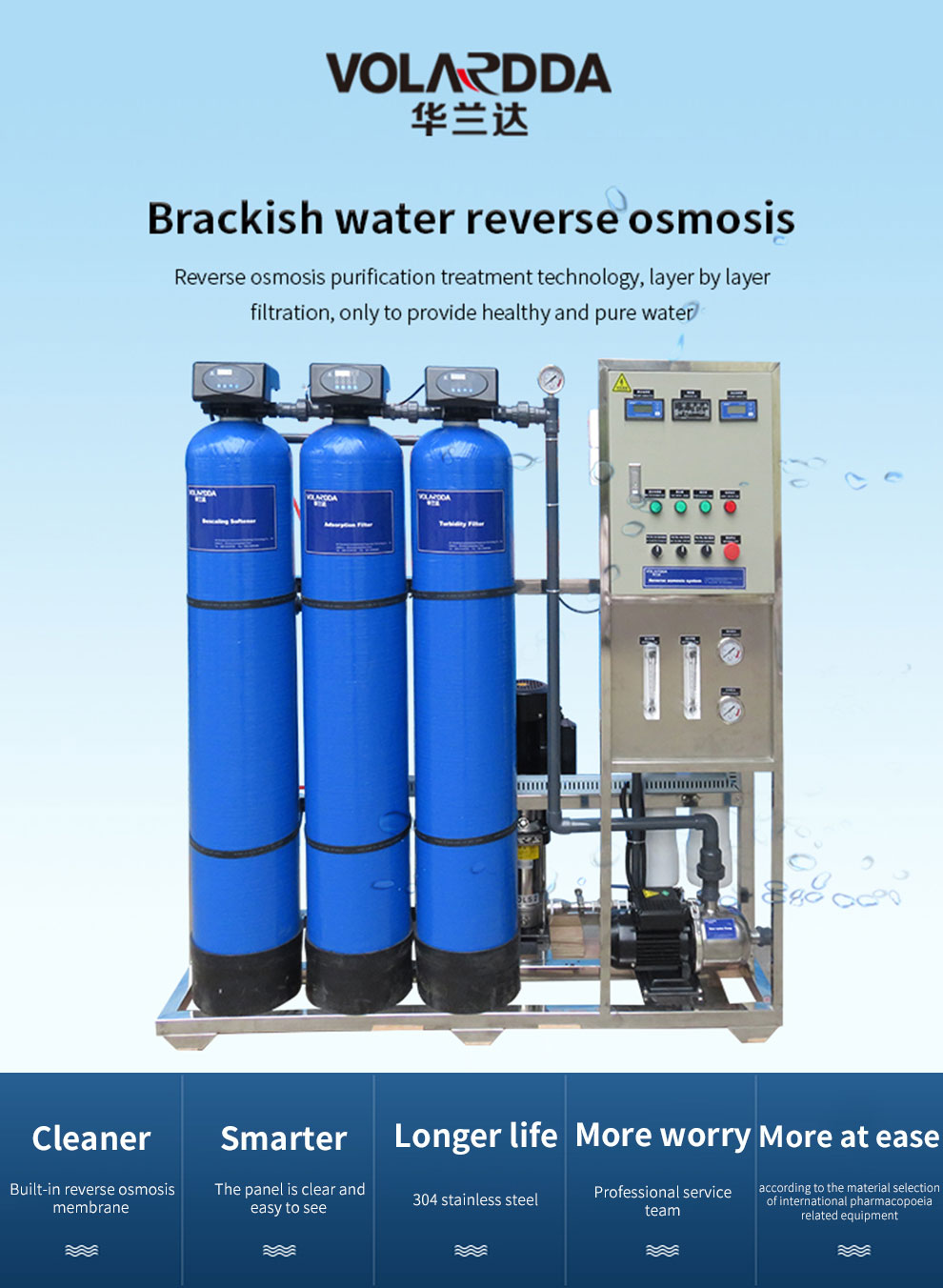Resistivity decreases during the operation of reverse osmosis edi pure water equipment. Resistivity is another indicator that characterizes the conductivity of water. The unit is MΩ·cm, which refers to the resistance value of two plate electrodes with a cross-sectional area of 1cm2 in the water when they are 1cm apart. The electrical resistivity has a reciprocal relationship with the electrical conductivity. In order to improve the characterization accuracy of water conductivity, when the conductivity is higher than 1μS/cm, it can be characterized by conductivity, and when the conductivity is less than 1μS/cm, it can be characterized by resistivity. The reasons for the decrease in resistivity are related to the pollution of influent water quality, pressure, flow rate, voltage, and influent water quality. The editors of VOLARDDA will explain them one by one below.
1. Unqualified water outlet of reverse osmosis equipment (including conductivity, hardness, variable metal, etc.)
If the raw water has high salt content, it is recommended to use bipolar RO reverse osmosis equipment as pre-demineralization, and its conductivity is kept at 1~3μS/cm. It is best to maintain high CO2 content in the inlet water, and it is recommended to use a degassing membrane or a degassing tower to remove the salt. CO2 removal. The pH deviates too much from neutral. Use pH adjustment to make the pH value of the EDI inlet water at 7-8. In the process of contact with air, the carbon dioxide gas dissolved in the high-purity water causes the conductivity to rise. Therefore, the conductivity of high-purity water should be tested under online airtight conditions.
2. There is a problem in the current control of the EDI system
As the working current increases, the quality of the produced water continues to improve. However, if the current is increased after increasing to the highest point, the amount of H+ and OH- ions produced by water ionization is too much. Except for the regeneration of resin, a large number of surplus ions act as current-carrying ions to conduct electricity. At the same time, due to the movement process of a large number of current-carrying ions Accumulation and clogging occurred during the process, and even reverse diffusion occurred, resulting in a decline in the quality of the produced water.
3. Changes in pH
The EDI system has a high CO2 content in the inlet water. If the CO2 content is greater than 10ppm, the EDI system cannot produce high-purity water.
4. Iron pollution
The iron pollution in the operation of the EDI system is the main reason for the progressive decrease in the resistance of the water produced. If ordinary steel pipes are used in the raw water and pretreatment system without internal anti-corrosion treatment, the iron content in the system will increase. After the iron is corroded, most of it will be dissolved in the water in the form of Fe(OH)2 and will be further oxidized. It becomes Fe(OH)3. Fe(OH)2 is a colloidal substance, and Fe(OH)3 is in a suspended state. The resin has a strong affinity for iron, and after being adsorbed by the resin, it will cause an irreversible reaction. In the anion and cation exchange water treatment, the anion and cation beds will be regenerated or cleaned to remove most of the iron in the resin. However, in the operation of EDI equipment, there is no regeneration and cleaning, and trace iron elements in the water will adhere to the yin and yang resins and the yin and yang films. Iron has strong electrical conductivity, and before it can react with the cationic resin, it is moved to the cationic membrane by the water in the EDI module close to the cationic membrane under the action of a large current. Simple iron ions are easy to penetrate, while the iron compounds in the jelly are not easy to penetrate the cation membrane, and are adsorbed on the surface of the cation membrane, contaminating the cation and cation membranes, and ultimately lead to the decline of the working performance of the EDI module and the poor quality of water produced. The resistance value shows a progressive decrease.
5. Organic pollution
Reverse osmosis edi pure water equipment is polluted by organic colloids in the water. Reverse osmosis can only remove organic colloids with a relative molecular weight greater than 200. Those with a molecular weight of less than 200 enter the EDI system. This part of the low-molecular-weight substance is adsorbed on the mesh of the skeleton and the surface of the anion and cation membrane by the anion and cation exchange resin in the module, which hinders the replacement reaction of anion and cation and the penetration rate of the ions in the water through the anion and cation membranes. , Thereby causing the performance of EDI to decline, and the resistivity of the produced water declines.
